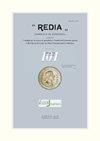BURSAPHELENCHUS SPECIES (NEMATODA: APHELENCHIDA) ASSOCIATED WITH AN OLIVE TREE IN CENTRAL ITALY
IF 0.8
4区 生物学
Q3 ZOOLOGY
引用次数: 0
Abstract
Olive cultivation is of great economic, ecological, and cultural interest in Italy, as well as in the rest of the Mediterranean basin. Among the pests of olive trees, several groups of insects, mites, and nematodes have been reported. Phytoparasitic nematodes especially of the genera Meloidogyne, Pratylenchus, Helicotylenchus, Xiphinema, Tylenchulus, Rotylenchulus, and Heterodera have usually been extracted from roots and soil around trees. On the other hand, no information is available concerning nematodes directly associated with the wood. At the end of September 2018, in a high-density cultivated olive grove in Tuscany (central Italy), several olive trees with decline symptoms were observed. Three Bursaphelenchus species, B. fungivorus, B. minutus, and B. sexdentati were extracted from the wood of one dead tree. Even though these species had already been reported in Italy, these findings were the first ones recorded in olive wood. Moreover, another undescribed Bursaphelenchusspecies was found associated with the bark beetle Hylesinus fraxini collected from olive trunks and branches. Further research is needed to investigate the role of insects and Bursaphelenchus spp. in the decline processes of olive trees.意大利中部与橄榄树有亲缘关系的一种线虫(线虫纲:线虫纲)
橄榄种植在意大利以及地中海盆地的其他地区具有巨大的经济、生态和文化意义。据报道,在橄榄树的害虫中,有几类昆虫、螨虫和线虫。植物寄生线虫,特别是Meloidogyne属、Pratylenchus属、Helicotylenchus属、Xiphinema属、Tylenchulus属、Rotylenchulus属和Heterodera属的植物寄生线虫,通常从树木的根和周围的土壤中提取。另一方面,没有关于与木材直接相关的线虫的资料。2018年9月底,在意大利托斯卡纳(意大利中部)高密度种植的橄榄林中,观察到几棵橄榄树出现了衰退症状。从一棵枯树的木材中提取了真菌芽孢杆菌(B. fungivorus)、分钟芽孢杆菌(B. minutus)和长齿芽孢杆菌(B. sexdentati) 3种。尽管这些物种已经在意大利被报道过,但这些发现是第一次在橄榄树林中被记录下来。此外,还发现了另一种未描述的bursaphelenchusus属,与橄榄树干和树枝上的树皮甲虫Hylesinus fraxini有关。昆虫和Bursaphelenchus spp.在橄榄树衰败过程中的作用有待进一步研究。
本文章由计算机程序翻译,如有差异,请以英文原文为准。
求助全文
约1分钟内获得全文
求助全文
来源期刊

Redia-Giornale Di Zoologia
ZOOLOGY-
CiteScore
1.20
自引率
20.00%
发文量
18
审稿时长
>12 weeks
期刊介绍:
Redia supports its long history of basic and applied research in entomology and invertebrate zoology in the field of crop and forest tree protection responding at the same time to the increasing need of innovation and technological improvement.
 求助内容:
求助内容: 应助结果提醒方式:
应助结果提醒方式:


